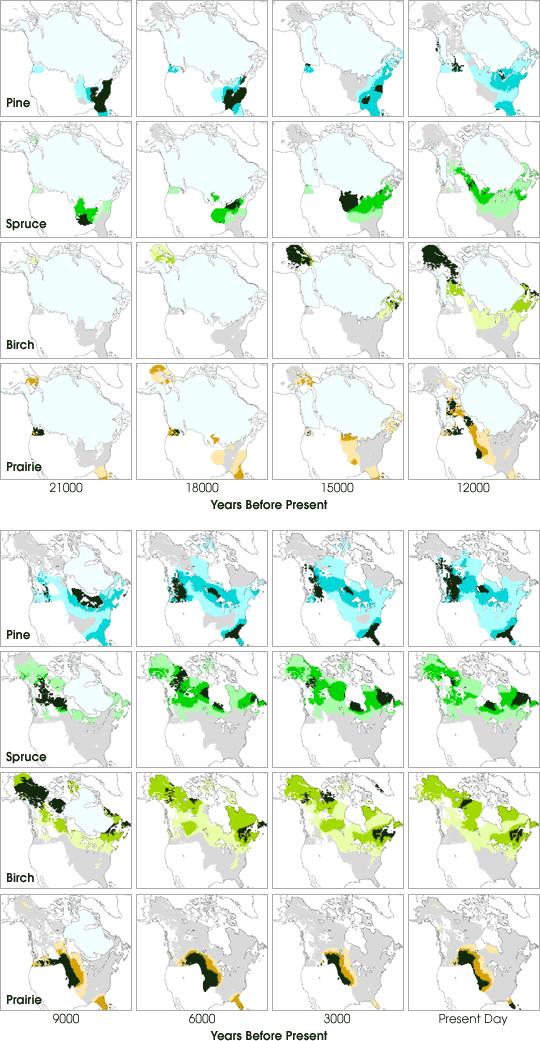


Though the boreal forests at the world’s northernmost latitudes may seem as timeless as the Earth itself, they have changed considerably through the ages. Not only have they migrated across the continents, but the vegetation found in the forests has also shifted. Using modern and paleoclimatological data gathered from everything from fossilized trees to ancient pollen grains, scientists have pieced together the migration of the boreal forests over the past 21,000 years. The story of this migration may help us understand more fully what will happen to our planet as our climate continues to warm.
The images above show changes in pine, spruce, birch, and non-grass prairie vegetation from 21,000 years ago to present. Increasing color intensity represents increasing concentration of pollen, which is proportional to the amount of that species in a given area. The Laurentide Ice Sheet is pale blue, and areas where no data were collected are white.
As can be seen in the images, spruce and northern pines, both of which had become established in the south began to retreat northward on the heels of the ice sheet 18,000 years ago. Around 15,000 years ago, the ice age’s dominant spruce species, P. critchfieldii, had gone extinct. By 12,000 years ago, the southern limit of remaining spruce and northern pines extended little farther than mid-continent, while their northern limit reached almost to Newfoundland, Canada. Fir and birch require more precipitation than spruce, and lagged the northward trek by several thousand years.
The end of the full glacial episode began the Holocene period, our modern era. The gradual warming experienced during the Holocene was punctuated by several flickers in climate, during which conditions would briefly become cooler, but overall the Earth was becoming warmer and most probably wetter. Between 12,000 and 9,000 years ago, spruce, fir, northern pines, and birch were all coexisting south of the edge of the glacier, which still covered much of Canada. Rapid increases in warmth during this period—probably in the form of summer temperature increases—caused spruce to decline, and northern pines dominated the early boreal forest.
Even as recently as 9,000 years ago, both spruce and birch, by that time well established in Canada and the northern United States, were still not settled into the present range, and actually began to spread southward once again. Around 6,000 years ago, the last of the continental ice sheets had melted, and the boreal forest was beginning to resemble its current self.
For more information, read: The Migrating Boreal Forests.
(Images courtesy Department of Geological Sciences at Brown University, the National Center for Ecological Analysis and Synthesis, and the Department of Geography at the University of Oregon.